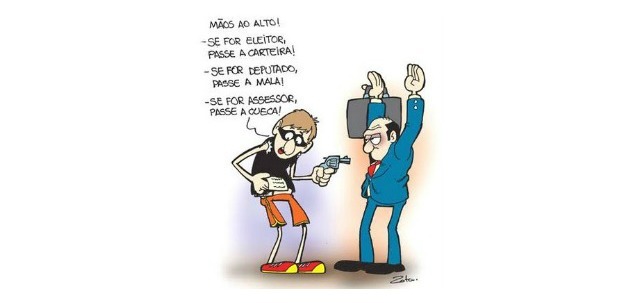Stylistics studies language and its ability to make messages more or less emotional and beautiful. For this reason, it is a very important area in literary circles.
If on the one hand Grammar is concerned with the cultured norm of the language, Stylistics complements the language studies, as it focuses on the expressive function of discourses through resources stylistic.
Fields of Stylistics
According to scholars, Stylistics can be divided into the following fields:
Phonic Stylistics
In this field, sound figures contribute to attributing harmony to texts through sound, as we can see in the sound figures or harmony below:
Alliteration: repeating consonants marks the rhythm of the text. Example:
O Pright of PIt's from Phedron is Pstraight.
Assonance: the harmonic repetition of vowels intensify the text's rhythm. Example:
my fOz of Iguazu
Pólo Suthere my azuthere
Luz of sentimentO nou(Excerpt from the song Linha do Equator - Djavan)
Onomatopoeia: the reproduction of phonemes and words that imitate sounds increase the expressiveness of speech. Example:

Morphological Stylistics
This field of Stylistics is primarily concerned with form. Therefore, the most used resource to express more emotion to the text are the augmentative and diminutive suffixes. Example:
In Brazil, the diminutive is used mainly in relation to food. Nothing awakens in us affectionate feelings like a good meal.
- One more bean?
The little bean spent two days bubbling in one of those man-eating cauldrons with a capacity for three missionaries. It takes whole pigs, every known giblet and spices, and it looks like a missionary. But the housewife treats him like an everyday mush.
- One more bean?
- A little.
- And a crumb?
- Next to the rice?
- That.
- And who knows another beer?
- Thank you.(Excerpt from Diminutive - Luís Fernando Veríssimo)
Syntactic Stylistics
Syntactic Stylistics uses a series of resources to provide aesthetic effects in texts. See below how syntax or construction figures contribute to this:
Silepsis: the phrasal construction is based on the agreement of the ideas expressed in the speech. Example:

Anaphora: Repeating words on a regular basis sets the pace of the text. Example:

Anacoluto: characterized by the change in the logical sequence of the sentence structure making the text more interesting. Example:
Me, because I'm soft, you keep abusing. (Ruben Braga)
Semantic Stylistics
In the field of Semantic Stylistics, the effects responsible for bringing emotion to the text are the pictures of words or semantics. Among them, the following stand out:
Metaphor: comparing words that do not relate to each other makes the text more attractive. Example:

Metonymy: is marked by the transposition of meanings, which considers the part for the whole. Example:
He was so hungry that he ate three courses for lunch.
Metonymy is present in the idea of "eating the dishes". In fact, the person did not eat the dishes, but what was in them.
Synesthesia: the stylistic effect is transmitted through the association of sensations by different sense organs. Example:
Now the harsh smell of flowers
take my eyes inside your petals.(Excerpt from Remembrance - Cecília Meireles)
Smell is associated with smell and not touch (harsh smell).
To learn more about stylistics, check out the contents below:- Connotation and Denotation
- Language Addictions: classification, examples and exercises
- Language Functions
- Commented exercises on language functions - with feedback
- Speech figures: summary and examples
- Speech Figure Exercises with Template
- Formal and Informal Language
- colloquial language
- Verbal and Non-Verbal Language
- Advertising Language
